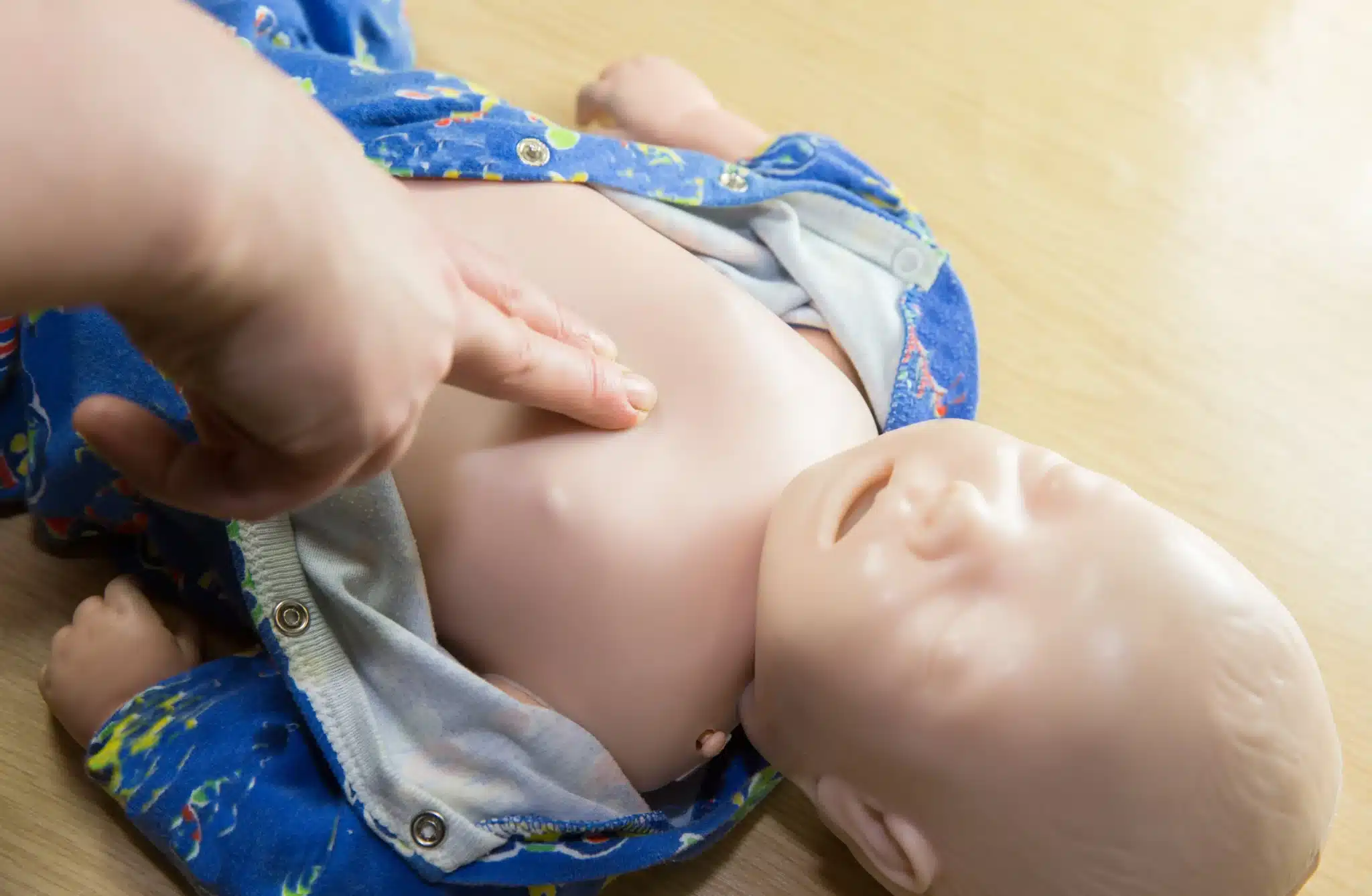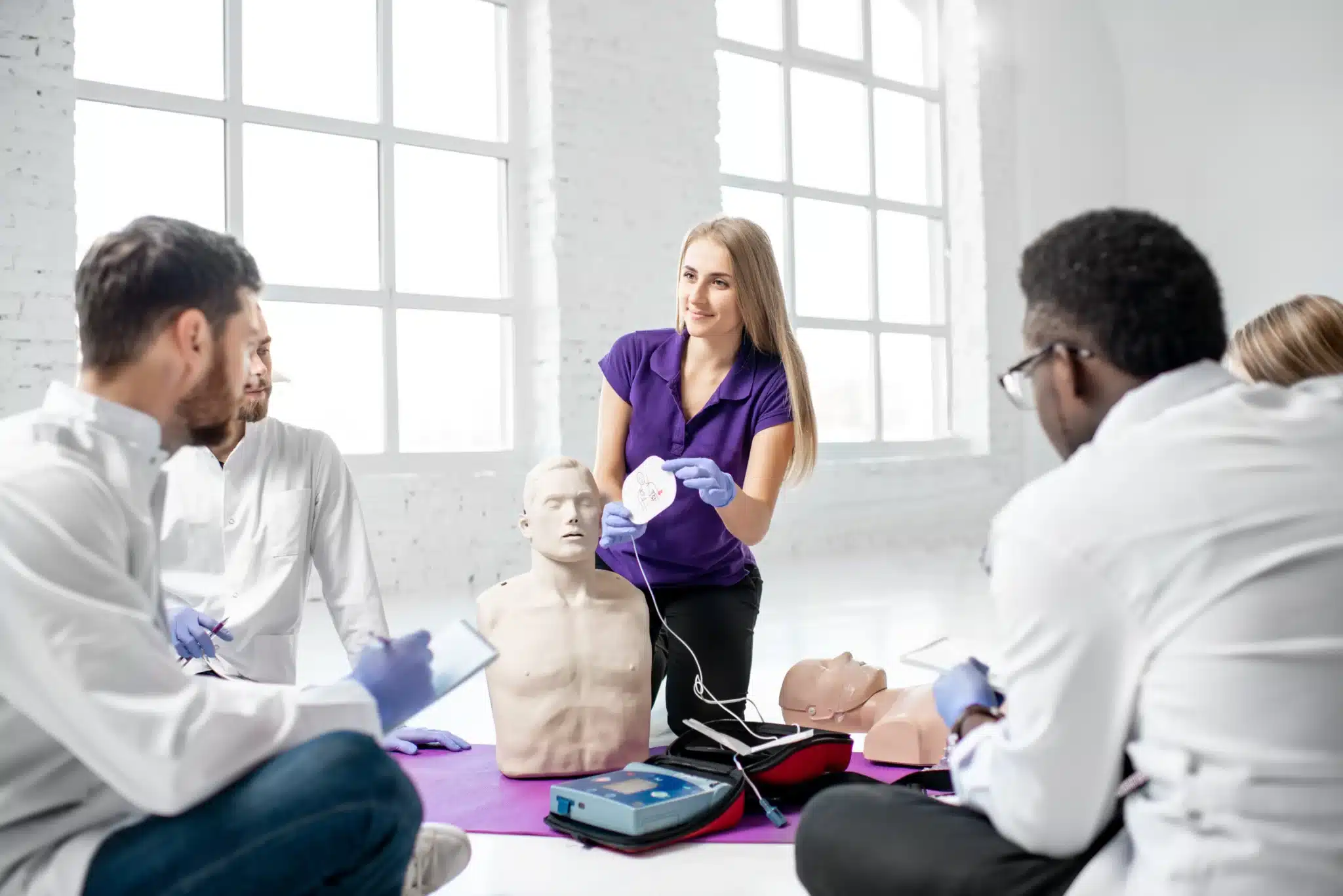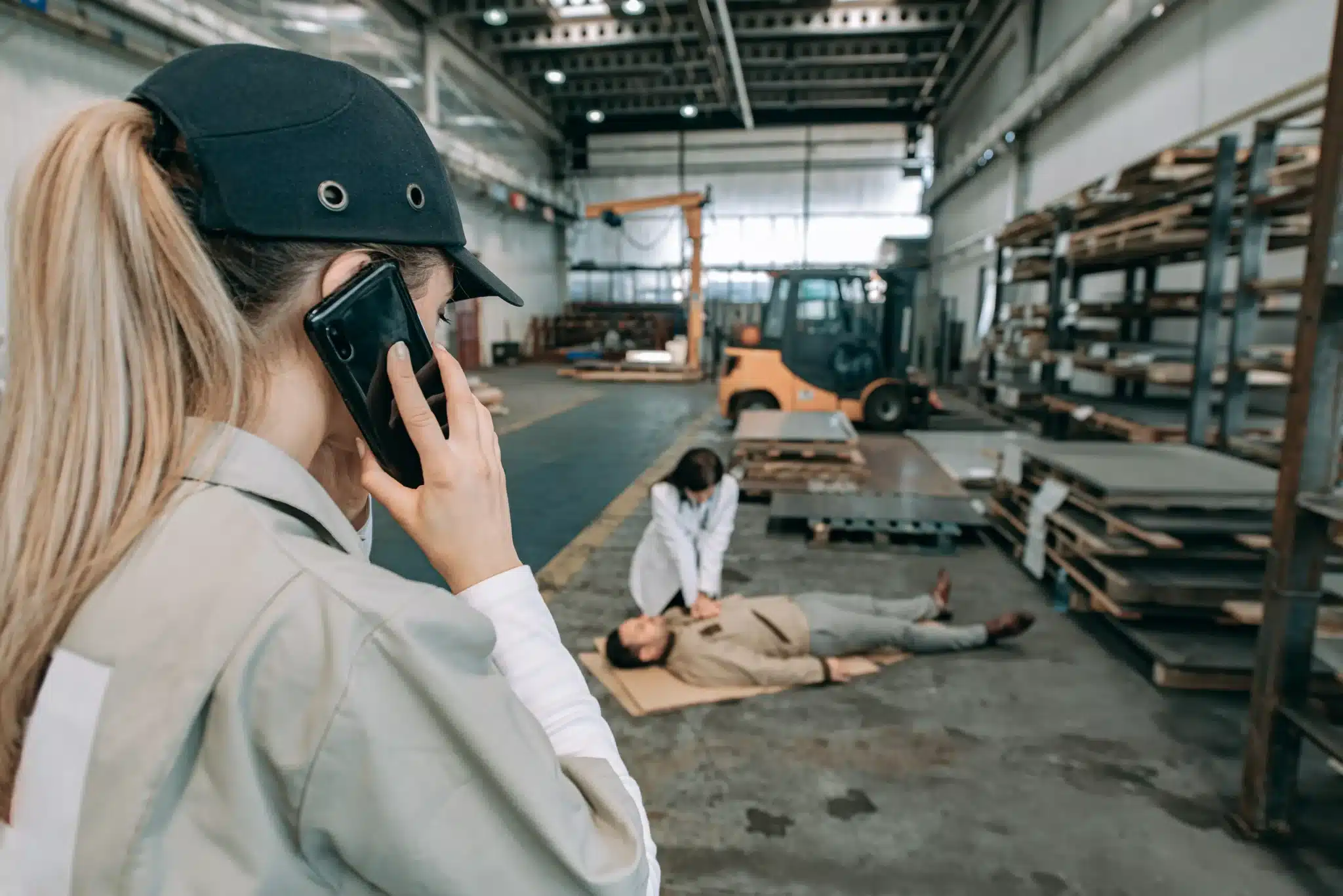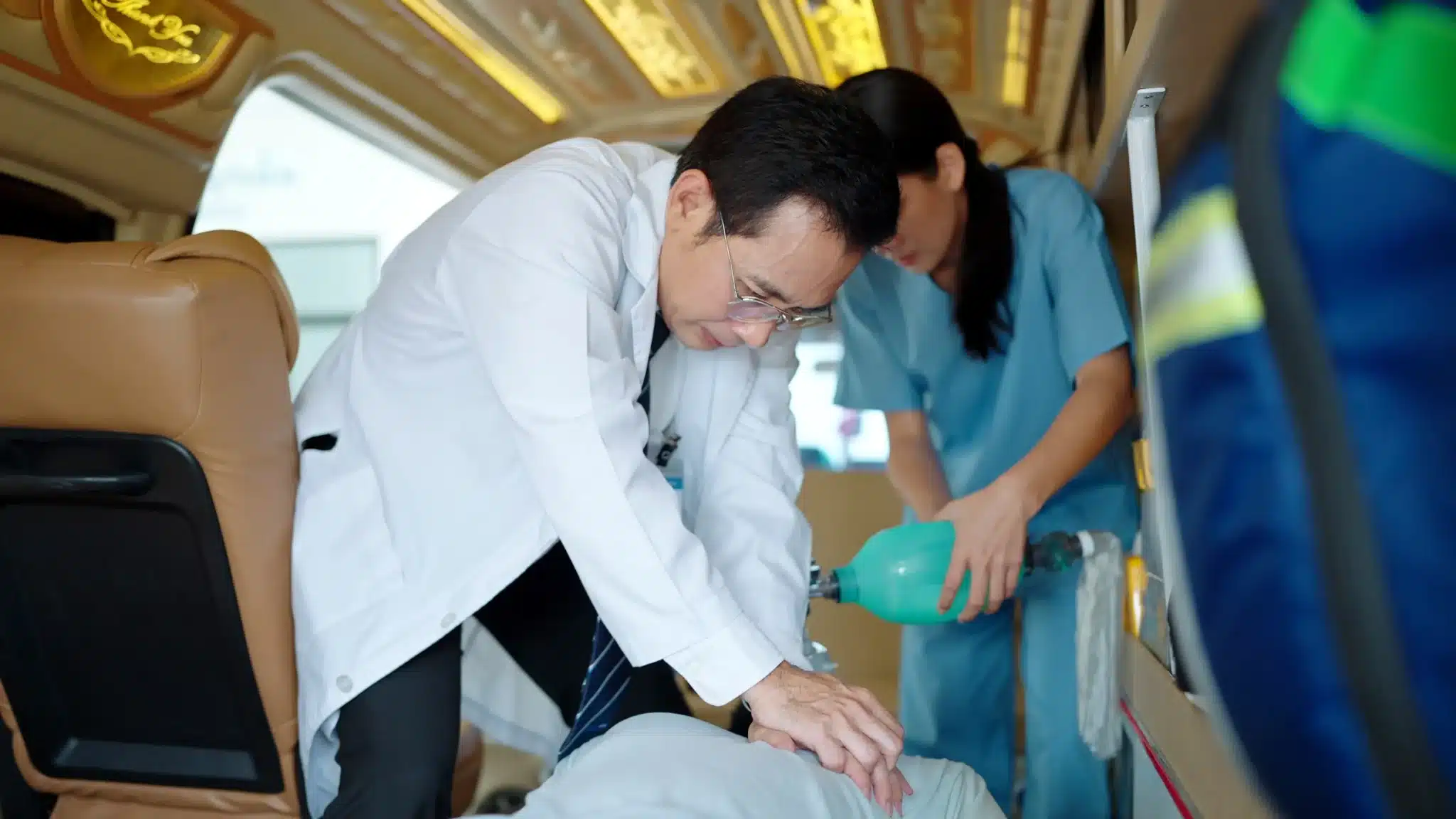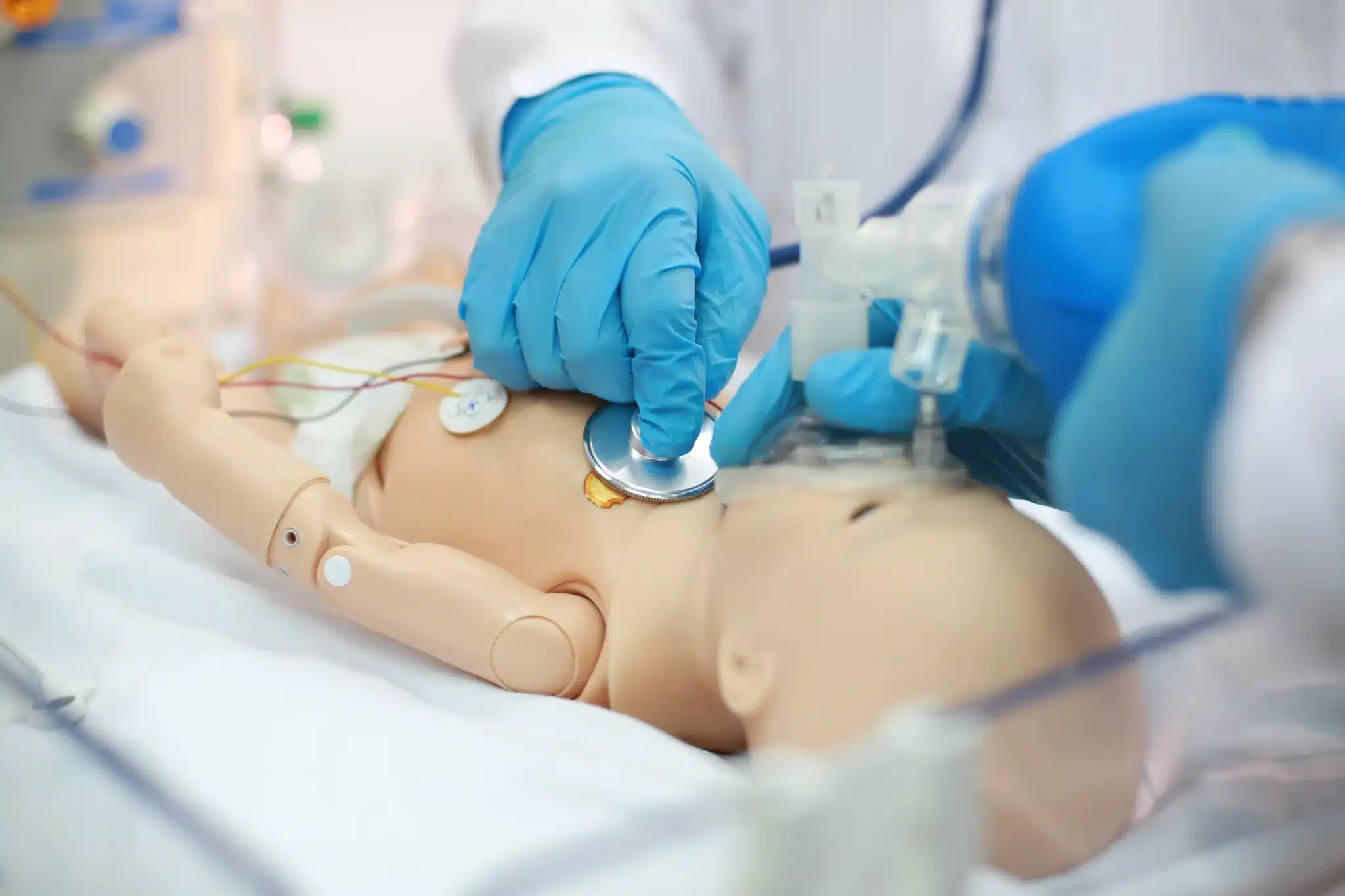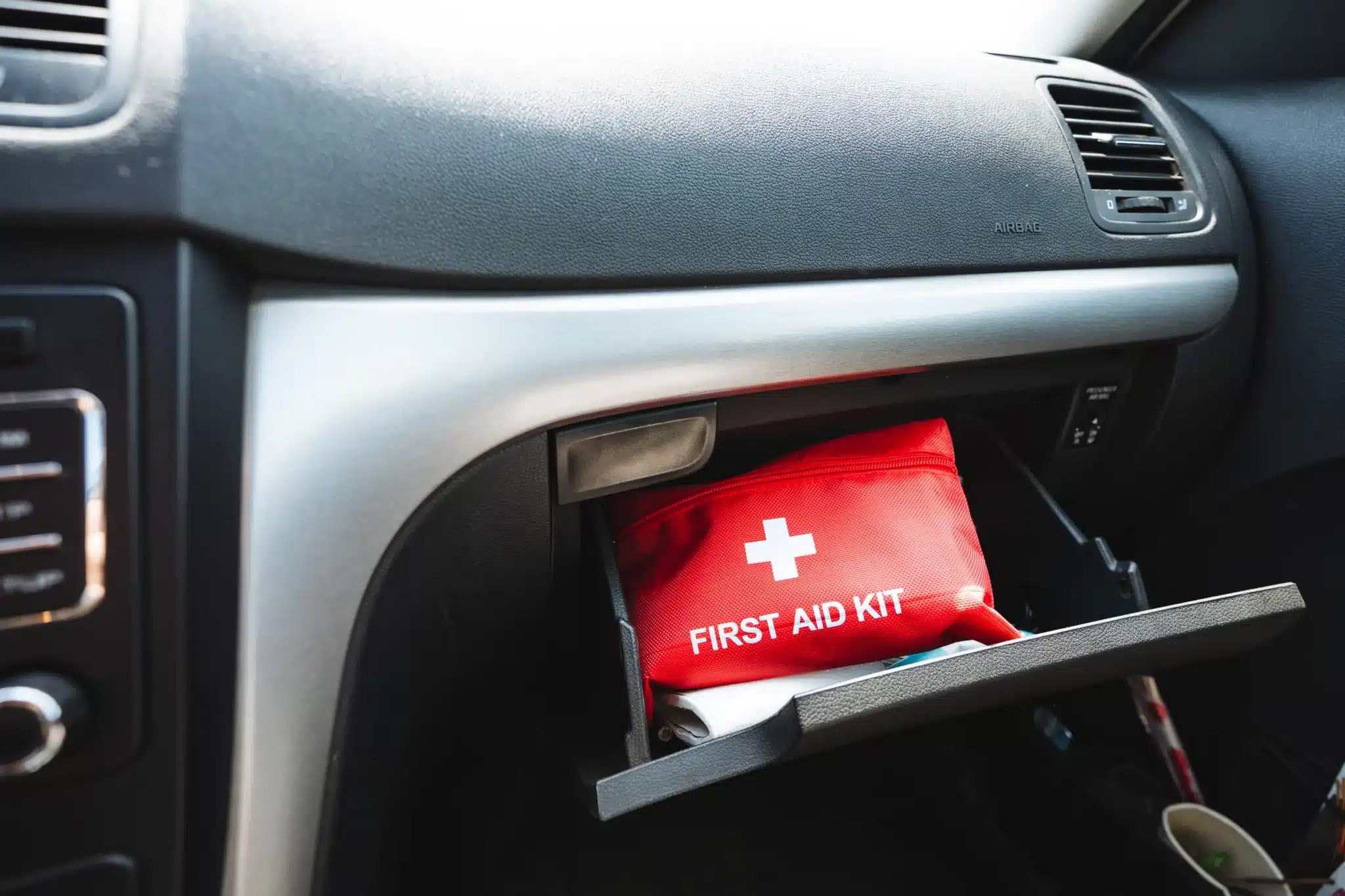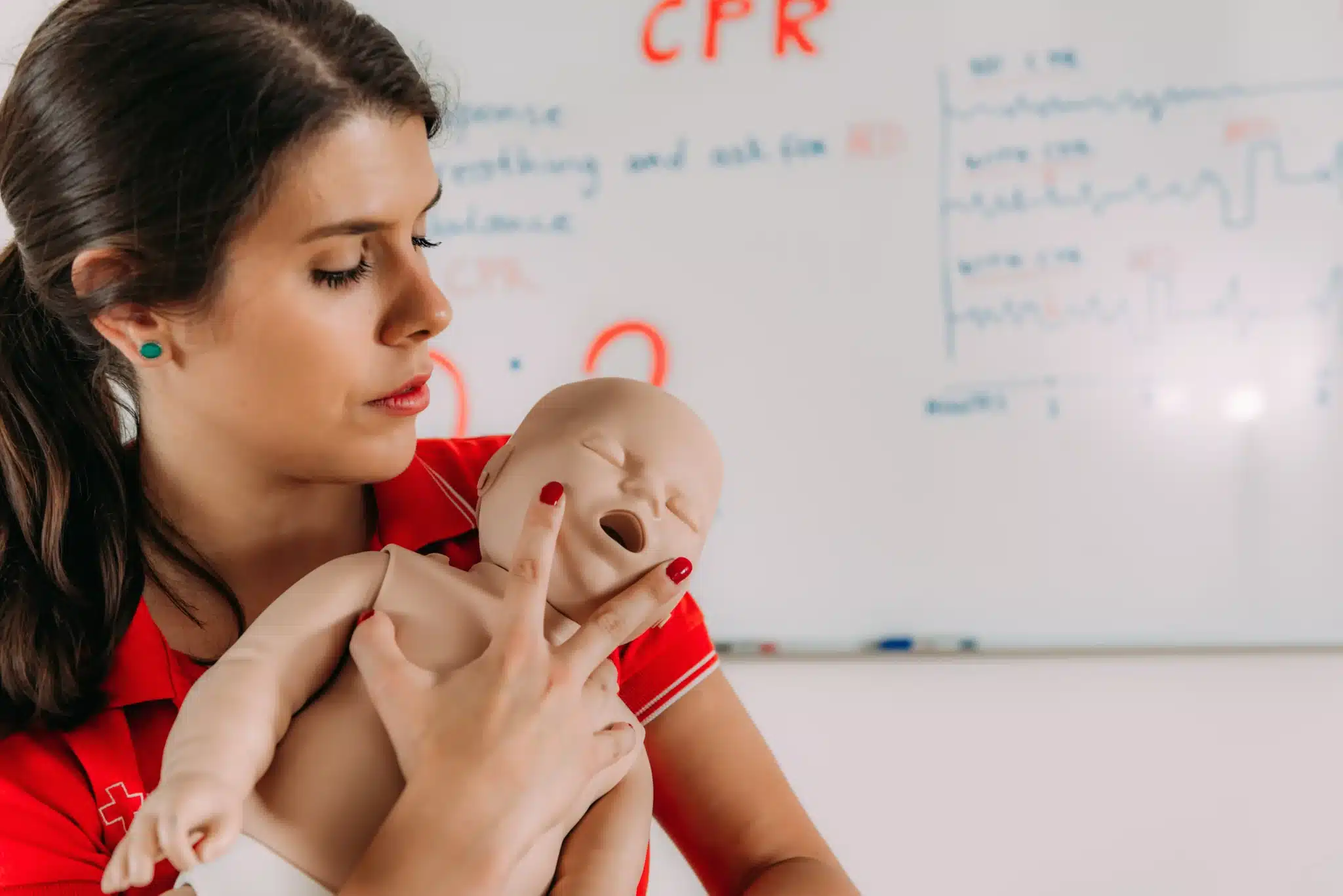In a medical emergency, seconds can matter. Having the skills to provide immediate care can significantly impact the outcome. Basic Life Support (BLS) training equips you with these life-saving skills, enabling you to respond effectively and confidently in critical situations. This guide explores the ins and outs of BLS training, including what it entails, who can benefit, and how to find “bls training near me.” We’ll also discuss different learning formats, cost considerations, and how to prepare for your training. Whether you’re pursuing BLS certification for professional reasons or personal preparedness, this guide will provide you with the information you need to get started.
Key Takeaways
- BLS training equips you with life-saving skills: Learn essential CPR and AED techniques applicable to any situation and boost your confidence in responding to medical emergencies. Explore various course formats to find the best fit for your schedule and learning preferences.
- Find the right BLS course for your needs: Select a reputable AHA-certified provider like Fremont CPR Classes, considering factors such as instructor experience, course content, and cost. Take advantage of options like group discounts and convenient scheduling.
- Stay current with your BLS certification: Regular practice and refresher courses are vital for maintaining your skills and ensuring you’re prepared for emergencies. Remember to renew your certification every two years to stay up-to-date with the latest guidelines.
What is BLS Training & Why Does it Matter?
Knowing what to do in a medical emergency can make all the difference. Basic Life Support (BLS) training equips you with the skills to respond effectively and potentially save a life. This section covers everything you need to know about BLS training, from what it is to why it matters.
What is Basic Life Support (BLS)?
Basic Life Support (BLS) is a crucial set of life-saving techniques used in medical emergencies, especially those involving cardiac arrest. BLS focuses on providing immediate care through high-quality CPR (Cardiopulmonary Resuscitation) and using an AED (Automated External Defibrillator). It differs from advanced life support courses like ACLS (Advanced Cardiovascular Life Support) and PALS (Pediatric Advanced Life Support), which are designed for healthcare professionals dealing with more complex cardiovascular and pediatric emergencies. BLS provides the foundational skills necessary to respond effectively in those critical first few minutes.
What Will You Learn in BLS Training?
In a BLS training course, you’ll gain practical, hands-on experience performing CPR and using an AED. You’ll learn how to assess an emergency situation, deliver chest compressions, provide rescue breaths, and operate an AED safely and effectively. The goal is to equip you with the confidence to act quickly and decisively when faced with a real-life emergency.
Who Needs BLS Certification?
While often associated with healthcare providers and first responders, BLS certification is valuable for anyone who wants to be prepared for an emergency. Whether you’re a medical student, teacher, coach, parent, or simply someone who wants to learn life-saving skills, BLS training can empower you to assist in critical situations. Consider getting your BLS certification today. It’s a vital skill set that can make a real difference.
Common BLS Misconceptions
One common misconception is that BLS training is only for medical professionals. This isn’t true! Anyone can benefit from learning these essential skills. Another misconception is that BLS training is purely theoretical. In reality, BLS courses emphasize hands-on practice, giving you the opportunity to apply your knowledge in simulated scenarios and build the confidence to use these techniques in a real emergency. For more information about our BLS training options, contact us today.
Find BLS Training Near You
Finding the right BLS training program requires understanding your options and what best fits your needs. Let’s explore the different avenues you can take to become BLS certified.
Where to Find Local BLS Training
If you prefer hands-on learning and personal interaction, in-person BLS classes are a great option. Many hospitals, community centers, and dedicated training centers offer these courses. For those in and around Fremont, Newark, and San Jose, Fremont CPR Classes offers a variety of American Heart Association (AHA) courses, including BLS. They focus on high-quality instruction and convenient scheduling, making it easier to fit training into your busy life. They also offer group discounts, which is perfect if you’re training with colleagues or friends. For additional options, explore our Northern California CPR directory.
Online BLS Course Options
Online BLS courses provide flexibility for those with demanding schedules or limited access to in-person training. These courses often involve a combination of online modules, videos, and assessments. The California ACLS Training Institute offers online BLS certification and recertification courses, which is particularly convenient for medical professionals in the Fremont area. Just be sure to choose a reputable provider that follows AHA guidelines.
Choosing the Right BLS Provider
Selecting the right BLS provider is crucial for a positive learning experience. Look for providers affiliated with recognized organizations like the AHA. Consider factors like instructor experience, course content, and overall cost. Fremont CPR Classes offers competitive pricing on various courses, from basic CPR training to specialized certifications like BLS. It’s always a good idea to compare options and choose a program that meets your specific needs and budget. For more specialized training like ACLS, they also have options available.
Fremont CPR Classes: Your Local BLS Solution
For a comprehensive and convenient BLS training experience in Fremont, Fremont CPR Classes is a great choice. They provide AHA-certified BLS courses designed to equip individuals with the skills and confidence to respond effectively in emergencies. Their focus on community safety and high-quality instruction makes them a valuable resource for anyone seeking BLS certification in the area. Contact them directly to learn more about their course offerings and schedules.
BLS Training: Formats & Costs
In-Person BLS Training
In-person BLS training gives you a supportive learning environment to ask questions and practice your skills with guidance from certified instructors. This hands-on approach works well for people who like direct interaction and immediate feedback. If you learn best in a traditional classroom setting and thrive on face-to-face instruction, in-person training might be the right choice. Check out our in-person BLS courses to learn more.
Online & Blended Learning BLS
Online and blended learning BLS certification options are becoming increasingly popular. They let you complete the theoretical parts of the course at your own speed, before a hands-on skills session. This flexibility is great for busy schedules, while still ensuring you get comprehensive training. Blended learning combines online convenience with the benefits of in-person skill practice. Learn more about how blended learning can work for you in our guide to BLS training.
How Much Does BLS Certification Cost?
BLS certification costs vary depending on the training provider and format. In-person classes typically cost between $70 and $150, while online courses can sometimes be less expensive. It’s always a good idea to compare different providers to find the best value. We offer competitive pricing on all our BLS certification courses.
Group Discounts & Financial Aid
Many training providers, including Fremont CPR Classes, offer group discounts if you’re training multiple employees. This can be a great way to save money for your company or organization. Some providers may also have financial aid options to make training more accessible. Reach out to us through our contact page to discuss options and find the best fit for your situation.
Prepare for Your BLS Training
Getting ready for your BLS training doesn’t require much, but knowing what to expect can help you feel more prepared and confident. This section covers the basics to help you walk into class ready to learn.
What to Expect During BLS Training
BLS training is typically a blend of instruction, demonstration, and hands-on practice. Expect a dynamic learning environment where you’ll actively participate. A typical BLS CPR class in Fremont lasts between four and six hours, covering essential life-saving techniques like CPR, AED use, and how to relieve choking. You can find more information about our BLS courses on our website.
Provided Materials & Equipment
Generally, all necessary training materials and equipment are provided as part of your BLS course. This includes mannequins for CPR practice, AED training devices, and any required textbooks or handouts. You’ll learn to perform high-quality CPR and use an Automated External Defibrillator (AED) in emergency situations. Just bring yourself, a willingness to learn, and comfortable clothing suitable for hands-on practice. More information on CPR and AED training can be found on our CPR Certification page.
BLS Certification Process & Validity
Upon successful completion of the course and skills assessment, you’ll receive your official BLS CPR card from the American Heart Association (AHA). This certification is valid for two years. Remember to renew your certification before it expires to maintain your skills and credentials. You can learn more about AHA BLS CPR Certification on CPR Certification Plus.
Scenario-Based Learning & Practice
BLS training often incorporates realistic scenarios to help you apply your knowledge and skills effectively. In-person training offers a supportive environment where you can ask questions, practice your skills, and gain confidence in your ability to respond to emergencies. This practical approach prepares you to handle real-life situations with greater composure and effectiveness.
Get the Most Out of BLS Training
Now that you’ve decided to pursue BLS training, let’s talk about maximizing its benefits. From building confidence to boosting your career, BLS certification offers numerous advantages.
Life-Saving Skills & Confidence
BLS training equips you with the essential skills to respond effectively during emergencies. You’ll learn CPR and how to use an AED, giving you the confidence to act quickly and potentially save a life. It’s about more than just technical skills; it’s about developing the composure to remain calm and focused in a crisis. While BLS provides foundational life support skills, certifications like ACLS (Advanced Cardiovascular Life Support) and PALS (Pediatric Advanced Life Support) offer more specialized training for healthcare professionals.
Career Advancement with BLS
For many healthcare providers, BLS certification is a job requirement. It shows your commitment to patient safety and can create opportunities for career growth. Plus, maintaining a current certification keeps you informed about the latest guidelines and best practices. Remember, your AHA BLS CPR card is valid for two years, so mark your calendar for renewal.
Maintaining Your BLS Skills
Like any skill, BLS requires regular practice. Consider refresher courses or practice sessions to reinforce what you’ve learned. Even something as simple as reviewing the steps of CPR or watching videos can be helpful. BLS courses in Fremont typically last four to six hours, making it a manageable time commitment.
Ongoing Support & Resources
Look for BLS training providers who offer continued support and resources. This might include access to online materials, refresher courses, or a community of fellow BLS-certified professionals. Fremont CPR Classes offers flexible course options to fit various learning styles and schedules. Don’t hesitate to contact your training provider if you have questions after completing your course.
Related Articles
- BLS Certification in San Jose: The Complete Guide – Fremont CPR Classes
- BLS Courses in San Jose: Your Complete Guide – Fremont CPR Classes
- Your Guide to ACLS Certification in San Jose – Fremont CPR Classes
- BLS Recertification Near Me: Your Complete Guide – Fremont CPR Classes
- BLS HeartCode San Jose: Your Certification Guide – Fremont CPR Classes
Frequently Asked Questions
Is BLS certification only for healthcare professionals? Not at all! While it’s definitely a requirement for many healthcare jobs, BLS certification is a valuable skill for anyone to have. Teachers, coaches, parents, and anyone who wants to be prepared for an emergency can benefit from BLS training. Knowing how to perform CPR and use an AED can empower you to help in a crisis.
What’s the difference between BLS and CPR? CPR, or Cardiopulmonary Resuscitation, is a core component of BLS. BLS (Basic Life Support) encompasses a broader range of skills, including CPR, using an AED, and recognizing the signs of a medical emergency. Think of CPR as one of the tools within the BLS toolkit.
How long does BLS certification last, and how do I renew it? BLS certification, specifically the AHA BLS CPR card, is valid for two years. To renew, you’ll need to take a recertification course before your current certification expires. This ensures your skills are up-to-date and you’re ready to respond effectively in an emergency.
What if I’m not comfortable in a traditional classroom setting? Are there other options for BLS training? Absolutely! Online and blended learning options are available, offering flexibility for those with busy schedules or who prefer self-paced learning. Blended learning combines online modules with in-person skills sessions, giving you the best of both worlds.
How can I find BLS training near me? Several resources can help you find local BLS training. Hospitals, community centers, and dedicated training centers often offer courses. You can also search online for certified training providers in your area. Don’t hesitate to contact providers directly to ask about course schedules, costs, and any other questions you may have.
